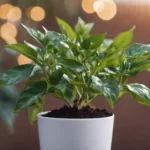Palm trees, with their gracefully arching fronds and symbolic association with tropical paradises, evoke images of sun-soaked landscapes. However, the lush appearance of these iconic trees prompts the question: Do palm trees need a lot of water to thrive? In this exploration, we delve into the watering requirements of palm trees, unraveling the nuances of their diverse species and their adaptation to varying environmental conditions.
Palm Tree Varieties and Water Needs
The world of palm trees is richly diverse, comprising numerous species that have evolved to thrive in different climates and ecosystems. Each palm variety has its own set of water requirements, influenced by factors such as native habitats and specific adaptations.
- Tropical Palms: Species like the Coconut Palm (Cocos nucifera) and Queen Palm (Syagrus romanzoffiana) naturally hail from tropical regions where consistent rainfall is common. These palms are adapted to environments with higher humidity and ample water availability.
- Arid Zone Palms: On the other hand, palms like the Date Palm (Phoenix dactylifera) and Pindo Palm (Butia capitata) have adapted to arid climates. These species can endure periods of drought and have mechanisms to conserve water.
Factors Influencing Palm Tree Watering
Several factors come into play when considering how much water palm trees need. These factors contribute to the variability in watering requirements:
- Climate: The climate of a particular region, whether tropical, subtropical, or arid, greatly influences the water needs of palm trees.
- Soil Type: The composition and drainage capabilities of the soil affect water retention, impacting how frequently and how much water palm trees should receive.
- Tree Age and Maturity: Young palm trees typically need more frequent watering to establish strong root systems, while mature trees are generally more resilient and can withstand longer intervals between watering.
Signs of Overwatering and Underwatering
Determining the right balance in watering palm trees involves recognizing signs of both overwatering and underwatering:
Overwatering Signs:
- Yellowing or browning of fronds.
- Wilting or drooping leaves, despite ample moisture.
- Fungus or mold growth around the base of the tree.
Underwatering Signs:
- Yellow or brown fronds starting from the tips.
- Leaf drop or premature shedding.
- Dry and brittle fronds.
Proper Watering Practices
Establishing a proper watering routine is fundamental to the well-being of palm trees. Adhering to these practices ensures that water is effectively delivered to the roots and supports overall tree health:
- Deep Watering: Rather than frequent shallow watering, deep watering encourages the development of a robust root system. This involves allowing the soil to absorb a significant amount of water during each watering session.
- Mulching: Applying a layer of mulch around the base of the palm helps retain soil moisture, moderates temperature, and reduces water evaporation, contributing to more efficient water utilization.
- Regular Moisture Assessment: Regularly checking the moisture level of the soil around the palm tree assists in gauging when it’s time for the next watering session. This prevents both overwatering and underwatering.
Drought Tolerance in Some Palm Species
While some palm species are synonymous with tropical abundance, others showcase remarkable resilience in arid conditions. Certain palms, including the Mediterranean Fan Palm (Chamaerops humilis) and the Windmill Palm (Trachycarpus fortunei), have developed adaptations that allow them to thrive with less water. These adaptations may include deep root systems and mechanisms to minimize water loss through transpiration.
Watering Considerations in Different Climates
Palm trees, being resilient and adaptable, necessitate nuanced watering approaches based on the climate they inhabit. Considerations for different climates include:
- Tropical Climates: In regions with consistent rainfall, supplemental watering may be minimal. However, ensuring proper drainage is crucial to prevent waterlogged soil.
- Subtropical Climates: Palms in subtropical areas benefit from regular watering, especially during drier periods. Adequate moisture supports their growth and vitality.
- Arid Climates: Palm trees in arid zones may require more strategic watering due to limited rainfall. Deep and infrequent watering helps them endure dry spells while avoiding waterlogged conditions.
Conclusion
In conclusion, the watering needs of palm trees are as diverse as the species themselves. From the lush rainforests to the arid desert landscapes, palm trees have evolved to thrive in various climates. Recognizing the factors influencing their water requirements, identifying signs of both overwatering and underwatering, and implementing proper watering practices are vital for maintaining healthy palm trees in any environment.
As guardians of these emblematic trees, gardeners play a pivotal role in striking the right balance, ensuring palms receive the water they need while respecting the natural adaptations that make them resilient. Whether under the tropical sun or in a subtropical breeze, understanding and respecting the intricacies of palm tree watering contributes to the enduring allure of these botanical treasures in our landscapes.



